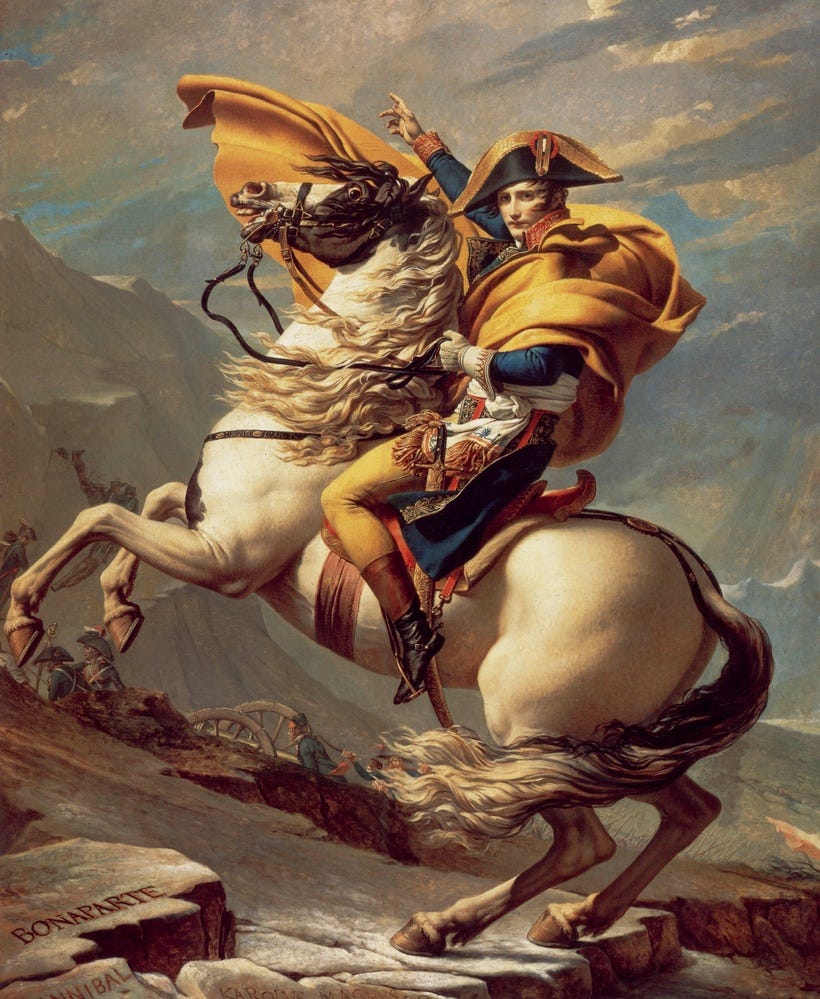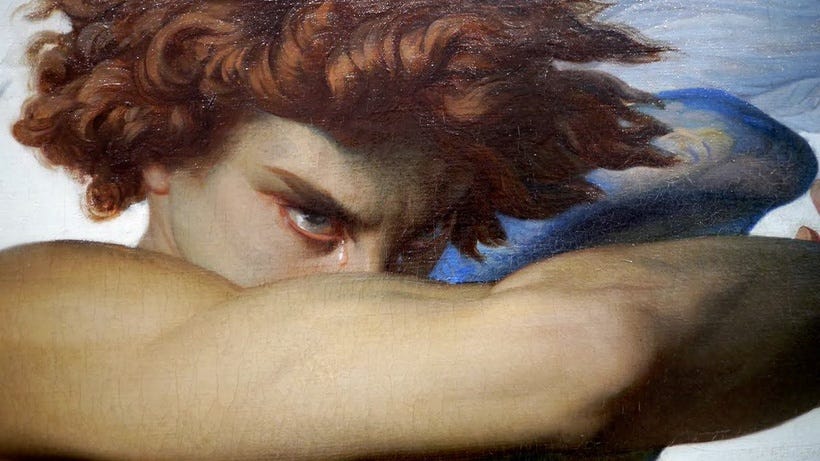I've often lectured on the history of art with a concentration on comics, but my not-so-secret love is 18th and 19th century Academic, Pre-Raphaelite, and narrative art.
When I tell people that, back in the day, a top quality artist had more education than a doctor, they look at me a little funny.
But I'm not kidding.
Artists studied for years in grueling conditions.
The work you see above by the French artist Alexandre Cabanel is the 1845 winner of the Prix-de-Rome, the crowning glory of the French Academy in Rome at which Cabanel studied for five years at the Villa de Medici.
He began his art studies at age eleven at a local school. His skill was such he was offered a teaching position, which he declined. At 16, he won a local competition and a scholarship which enabled him to travel to Paris where he studied for six years under the tutelage of Francois-Eduard Picot, a neo-classical painter who had been a student of Jacques Louis-David.
Louis-David. This painter guy.
Love that horse.
Picot was well-regarded as both a painter and a teacher, as he had a number of students who went on to win the Prix-de-Rome. He was especially noted for his ability to teach without turning his students into clones.
It would be another six years before Cabanel could qualify to move on to get the opportunity to enter the Prix and it took him two tries to make it to the final round.
In order to qualify for the Prix, you had to be under 30 years of age, male, single, French, and have the recommendation of a well-respected art teacher.
The field was narrowed down to about 100 competitors. Under strict secrecy, an art professor chose a subject for the first round. Competitors had a single day in which to produce an oil sketch of the theme. The work was produced under guard, with anonymous submission of sketches presented to the judges to avoid favoritism.
Twenty were chosen from these to move on to the next round which consisted of a nude study with live model, completed in seven hour sessions over four days.
Ten students were then chosen for the final round.
Again, under strict secrecy, a subject was chosen and students were granted twelve hours in which to create an oil sketch and a copy of the sketch - one to keep and one for the judges. The secret theme prevented any student from rushing out to get ahead of his competitors re: research and ideation, and two copies of the sketch prevented the competitors from making changes to their work after the deadline had passed.
The final round saw the 10 competitors cloistered in their studio cubicles for 72 days with strict limitations on access to props, reference, models, and sketches. The artist was to rely almost entirely on their knowledge and skill to create the work.
The painting above, Jesus dans le Pretiore, Cabanel's entry, was second prize, though the judges were so impressed by it they decided to ditch a Prix prize intended for music to award Cabanel an extra pension to study in Rome alongside the first prize winner.
In addition to the main event competition of the Prix, there was the concours de la Demi-figure peinte, which required the artist to paint a torso in six sessions of seven hours each, and the concours de la Tete d'expression, which required the student to paint a finished work exhibiting their facility with human expression. This was one of the few occasions in which a female model was permitted to pose for a student.
To enter these competitions, one had to have already won a concours de Perspective - a technical work exhibiting one's mastery of perspective.
All competitions required that artists produce finished work with limited time constraints and limited reference resources, all while under guard.
Money from the awards allowed the Prix winners to study in Rome for five years, where the student was required to produce a series of paintings in various modes: full figure, historical, portraits, etc.
In his second year, Cabanel produced this favorite of mine: The Fallen Angel.
Yowsa.
Keep in mind Cabanel was about 24 when he painted this.
He was a student.
Yeah, let that sink in.
Many artists today would chafe at the idea of such strict, relentless training. When Cabanel finally graduated and returned to Paris as a professional painter, he had already received nearly sixteen years of focused, intense education on art and art alone.
I'd kill for that. Or, at least sacrifice a goat for it.
You can graduate from medical school and be operating on patients in less time than that artist studied how to paint that angel.
The grueling training was not meant to stifle the creator, as many who are disdainful of the Academic art scene now claim, but to empower the artist to "open up the channels of artistic expression. This supreme end should never be lost sight of in the process of acquiring master over means." (Lemuel Wilmarth)
Let's have another close up of this glorious thing.
The devil is a red head.
Who knew.








Colleen, you are a national treasure.
The intense effort taught the patience needed to hyperfocus on details to refine the right fine motor skills required to produce this kind of art. Anyone supremely dedicated would gladly spend the effort.
This essay reminds me of something one of my college professors once taught: “The only way you’ll be world class in anything is if you truly enjoy what you doing.”
Talent takes you so far, but passion gets you to the mountain top. Thanks for writing this!